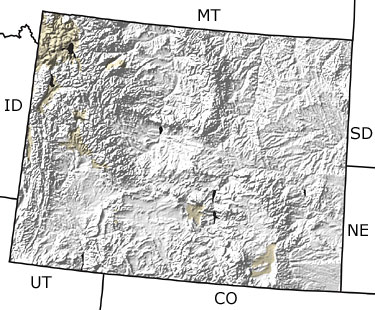Paleontology and geologyQuaternary rocks in Wyoming are predominantly the result of volcanic activity, glaciation, and deposition by river systems. Rocks produced by volcanic activity are well exposed in Yellowstone National Park in the northwestern corner of the state. During the Quaternary, several episodes of glaciation occurred in Wyoming, creating extensive local ice caps in the mountains, and glaciers flowed down the existing valleys to the basin floors. Particularly nice examples of glacial features can be seen in the Wind River and Bighorn Mountains in western Wyoming. These include moraines (ridges of debris dropped by melting ice), glacial outwash deposits, finely layered silt and clay deposits (varves) that formed on the bottoms of glacial lakes, and U-shaped valleys carved by the moving ice. Fossil diatoms and pollen have been recovered from glacial lake sediments. Mammoth, horse, camel, bison, and Pronghorn antelope fossils have been found in northern Wyoming. |

